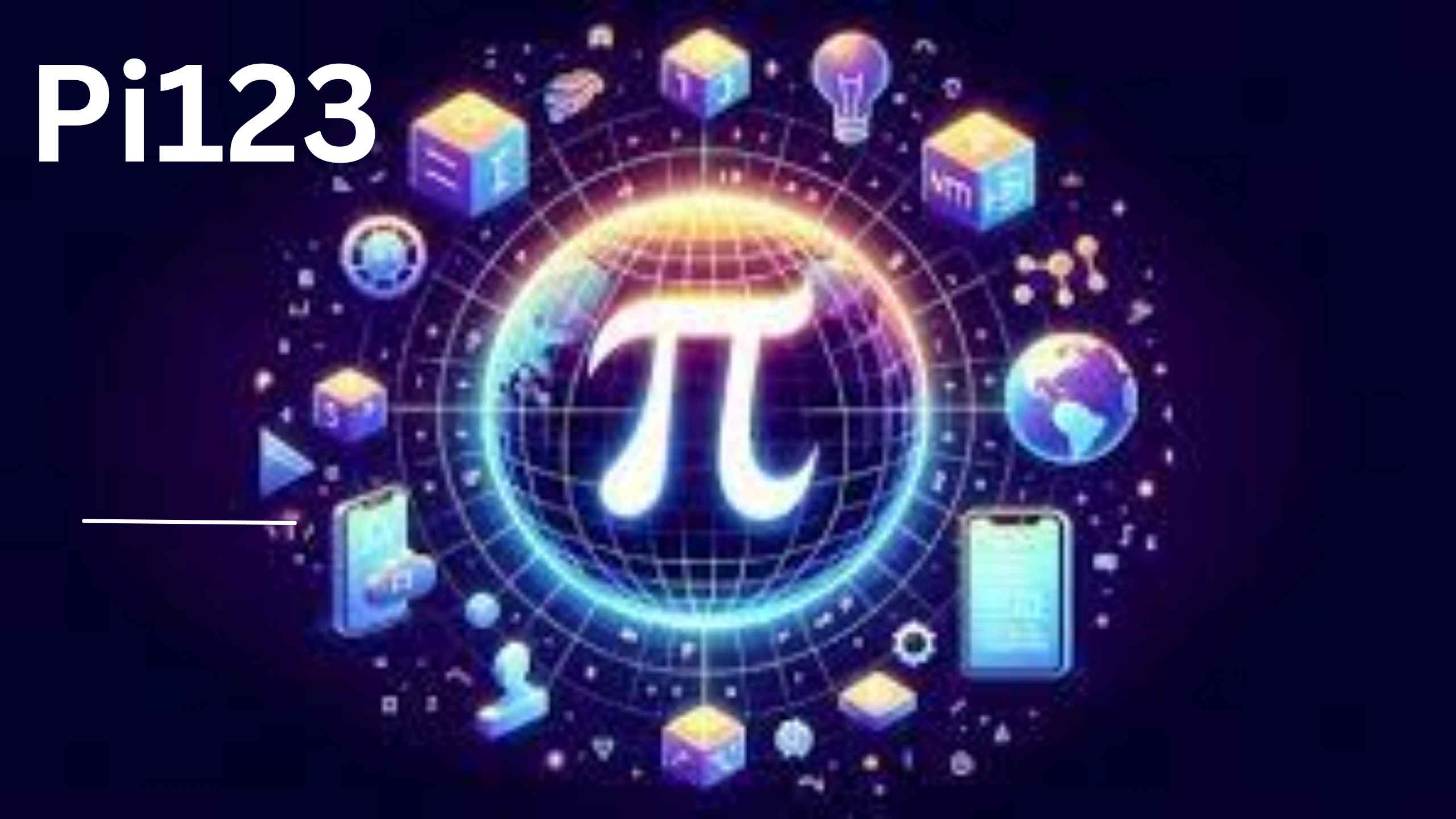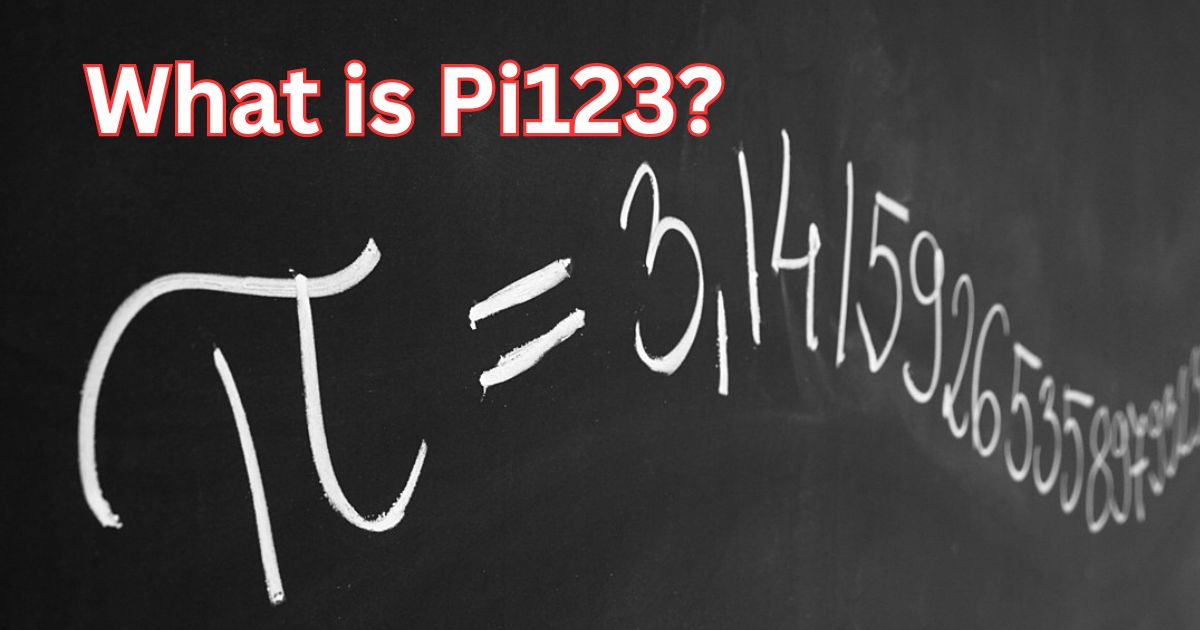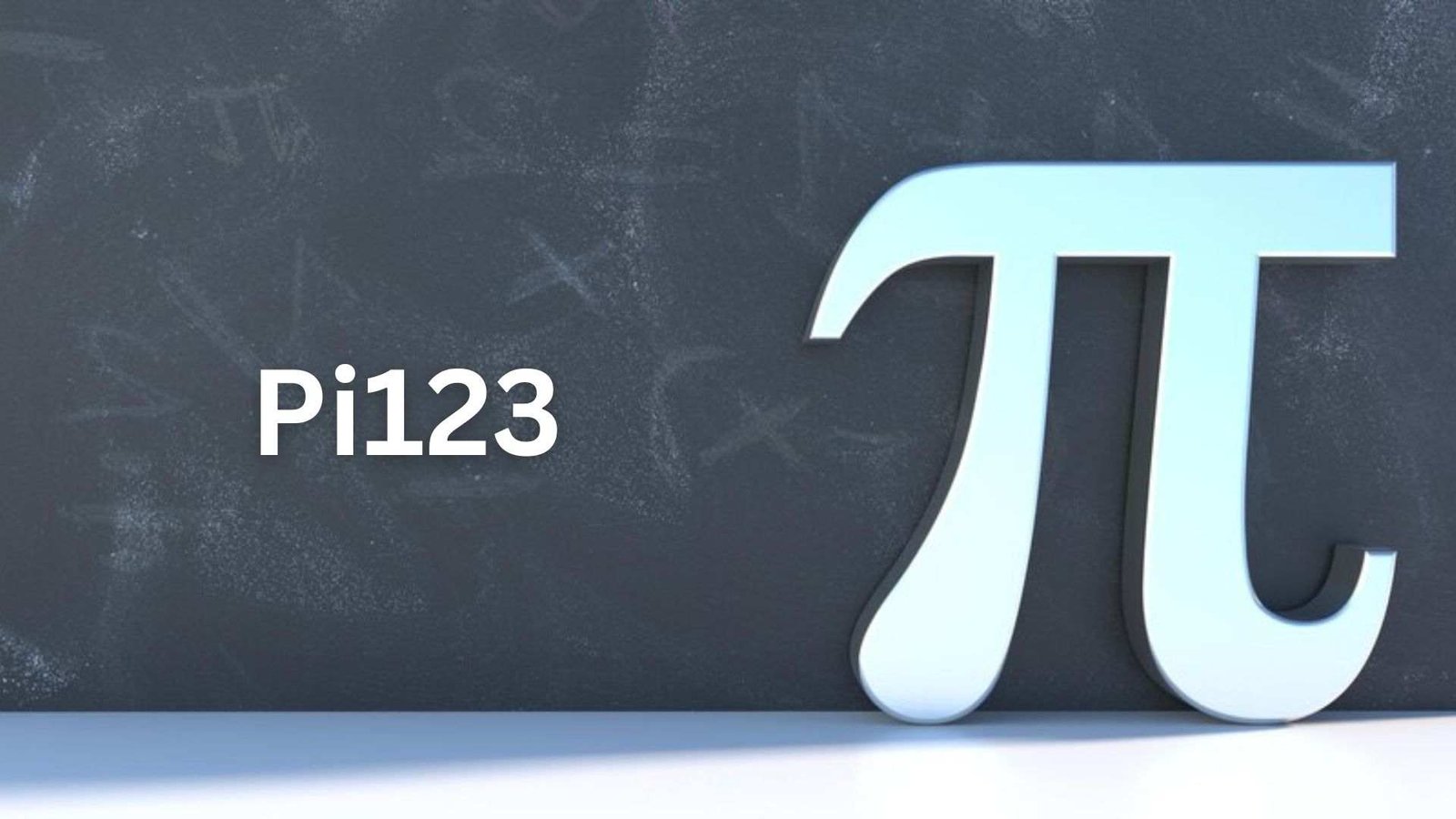pi123

pi123, In the ever-evolving landscape of mathematics and computational sciences, the advent of Pi123 has sparked a revolution. Pi123 is not merely a tool; it represents a paradigm shift in how we approach complex mathematical computations, offering a potent blend of accuracy, efficiency, and versatility that has transformed the way mathematicians, scientists, engineers, and enthusiasts alike tackle numerical challenges. In this comprehensive article, we delve into the intricacies of Pi123, exploring its origins, functionalities, applications, and the profound impact it has had on various fields.

Genesis of Pi123
Pi123 emerged from the visionary minds at Quantum Dynamics Research Group (QDRG), a pioneering research institute dedicated to pushing the boundaries of computational mathematics. Conceived as a response to the limitations of existing computational tools in handling intricate mathematical problems, Pi123 was developed with a singular mission: to revolutionize numerical computations by harnessing the power of cutting-edge algorithms and advanced mathematical techniques.
Must Read=the 1982 movie poltergeist used real skeletons as – tymoff
Unraveling the Capabilities
At its core, Pi123 is a multifaceted computational engine designed to excel in diverse mathematical domains. Unlike traditional computational software that relies on finite precision arithmetic, Pi123 adopts an innovative approach leveraging symbolic computation, numerical analysis, and machine learning algorithms. This unique blend empowers Pi123 to tackle a wide spectrum of mathematical tasks with unprecedented accuracy and efficiency.
Symbolic Computation
Symbolic computation lies at the heart of Pi123’s prowess. By representing mathematical expressions in their exact symbolic form, Pi123 avoids the pitfalls of numerical approximations, ensuring precise results even for highly complex equations. Whether it’s symbolic differentiation, integration, or equation solving, Pi123 excels in handling symbolic manipulations with remarkable speed and accuracy.
Numerical Analysis
In addition to symbolic computation, Pi123 harnesses the principles of numerical analysis to tackle problems that demand numerical precision. Through sophisticated numerical algorithms and techniques, Pi123 navigates the realm of numerical integration, optimization, and root-finding with unparalleled efficiency. From computational physics to engineering simulations, Pi123’s numerical capabilities find applications across a plethora of disciplines.
Machine Learning Integration
What sets Pi123 apart is its integration of machine learning algorithms, enabling it to adapt and optimize its computational strategies based on past experiences. Through machine learning-driven heuristics, Pi123 fine-tunes its approach to different types of mathematical problems, continuously enhancing its performance and versatility. This adaptive intelligence makes Pi123 a formidable ally in exploratory research and problem-solving endeavors.

Applications Across Disciplines
The versatility of Pi123 transcends disciplinary boundaries, finding applications in a myriad of fields:
Physics and Engineering
In the realm of physics and engineering, Pi123 serves as a computational workhorse, facilitating the simulation of complex physical systems, the optimization of engineering designs, and the analysis of experimental data. Whether it’s modeling celestial mechanics, simulating fluid dynamics, or designing innovative structures, Pi123 empowers researchers and engineers to push the boundaries of what’s possible.
Financial Modeling
In finance and economics, Pi123 emerges as a powerful tool for quantitative analysis, risk assessment, and predictive modeling. From pricing complex derivatives to forecasting market trends, Pi123’s mathematical prowess provides invaluable insights to financial institutions, investment firms, and policymakers, enabling informed decision-making in an increasingly volatile economic landscape.
Artificial Intelligence and Machine Learning
In the realm of artificial intelligence and machine learning, Pi123 plays a pivotal role in algorithm development, model training, and data analysis. Its integration of symbolic computation and machine learning algorithms offers a novel approach to symbolic regression, feature engineering, and model interpretation, opening new avenues for innovation in AI research and application development.
Cryptography and Cybersecurity
In the domain of cryptography and cybersecurity, Pi123’s mathematical sophistication lends itself to cryptographic protocol analysis, cryptographic key generation, and vulnerability assessment. Its ability to handle complex mathematical constructs with precision enhances the security and resilience of cryptographic systems, safeguarding sensitive information in an increasingly interconnected world.
Future Prospects and Challenges
As Pi123 continues to evolve, the prospects for its future are as promising as they are challenging. The integration of quantum computing principles, the exploration of new mathematical frontiers, and the democratization of computational resources are just a few avenues ripe for exploration. However, with great power comes great responsibility, and the ethical implications of AI-driven mathematical systems demand careful consideration.

FAQ
. What is Pi123?
- Pi123 is a revolutionary computational engine developed by the Quantum Dynamics Research Group (QDRG), designed to excel in a wide range of mathematical computations.
2. How does Pi123 differ from other computational tools?
- Pi123 adopts a unique blend of symbolic computation, numerical analysis, and machine learning algorithms, allowing it to handle complex mathematical tasks with unprecedented accuracy and efficiency.
3. Can Pi123 solve symbolic mathematical expressions?
- Yes, Pi123 specializes in symbolic computation, enabling it to manipulate and solve symbolic mathematical expressions with precision.
4. What types of numerical computations can Pi123 perform?
- Pi123 can perform various numerical computations, including integration, optimization, root-finding, and more, with high accuracy and efficiency.
5. Does Pi123 incorporate machine learning algorithms?
- Yes, Pi123 integrates machine learning algorithms to adapt and optimize its computational strategies based on past experiences, enhancing its performance and versatility.
6. In which fields can Pi123 be applied?
- Pi123 finds applications across diverse fields such as physics, engineering, finance, artificial intelligence, cryptography, and cybersecurity, among others.
7. Is Pi123 suitable for financial modeling and analysis?
- Absolutely, Pi123 is well-suited for financial modeling, risk assessment, predictive analysis, and other quantitative tasks in finance and economics.
8. Can Pi123 be used for scientific simulations?
- Yes, Pi123 serves as a powerful tool for scientific simulations, facilitating the modeling of complex physical systems, fluid dynamics, celestial mechanics, and more.
9. How does Pi123 contribute to artificial intelligence and machine learning?
- Pi123 aids in algorithm development, model training, data analysis, and interpretation, offering novel approaches to symbolic regression, feature engineering, and model optimization.
10. What role does Pi123 play in cryptography and cybersecurity? – Pi123 enhances cryptographic protocol analysis, key generation, vulnerability assessment, and other security-related tasks, contributing to the resilience of cryptographic systems.
11. Can Pi123 handle large-scale computational tasks? – Yes, Pi123 is capable of handling large-scale computational tasks efficiently, thanks to its advanced algorithms and optimization techniques.
12. Is Pi123 accessible to non-experts in mathematics and computing? – While Pi123 is primarily designed for experts in mathematics and computational sciences, efforts are underway to make it more accessible through user-friendly interfaces and documentation.
13. Does Pi123 support parallel and distributed computing? – Yes, Pi123 supports parallel and distributed computing paradigms, allowing for efficient utilization of computational resources in multi-core and distributed computing environments.
14. Can Pi123 be integrated into existing software systems? – Yes, Pi123 offers APIs and libraries for seamless integration into existing software systems, enabling developers to leverage its computational capabilities within their applications.
15. How frequently is Pi123 updated? – Pi123 undergoes regular updates and enhancements to incorporate new algorithms, optimizations, and features, ensuring it stays at the forefront of computational mathematics.
16. Is Pi123 available for commercial use? – Yes, Pi123 is available for commercial use under various licensing arrangements, catering to the needs of enterprises, research institutions, and academic organizations.
17. Does Pi123 offer support and documentation? – Yes, Pi123 provides comprehensive support, documentation, and online resources to assist users in utilizing its features effectively and troubleshooting any issues they may encounter.
Conclusion
In the ever-expanding universe of computational mathematics, Pi123 shines as a beacon of innovation and ingenuity. Its blend of symbolic computation, numerical analysis, and machine learning algorithms has redefined the boundaries of mathematical computation, empowering researchers, scientists, and enthusiasts to explore new horizons and solve problems that were once deemed insurmountable. As we stand on the precipice of a new era in mathematical exploration, Pi123 stands ready to lead the way, illuminating the path towards a future where the impossible becomes possible, one computation at a time.
